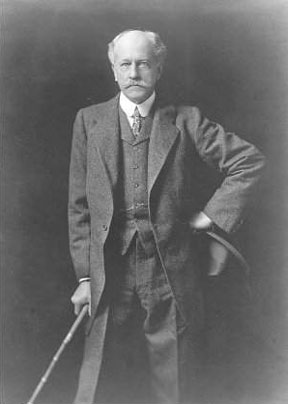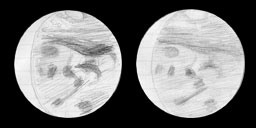After returning to Boston in 1893, Lowell - at Christmas -- received as a present the French astronomy-writer Camille Flammarion's massive compendium of Mars observations, La Planete Mars. Lowell immediately went ga ga for Mars. He arranged an impromptu meeting with Harvard astronomer William H. Pickering, back from observing Mars in the Andes of Peru. Pickering helped Lowell borrow a pair of telescopes and agreed to serve as advisor on a Mars observing expedition "out west." The site rather hastily chosen was Flagstaff, Arizona, on a 7000 foot high mesa on the Coconino Plateau.
By June 1894, with Mars still more than four months from opposition, Pickering slapped together for Lowell a prefabricated dome on "Mars's Hill," just outside the pioneer railroad town of Flagstaff. Relations between the two men became strained - Pickering had always been very much an underling to his powerful and domineering brother, Edward Pickering, director of the Harvard College Observatory, and did not relish the idea of remaining in a subordinate role to another domineering elder-brother type. The two men parted ways at the end of the observing season. Eventually Pickering settled in Jamaica, where as an elder statesman of planetary astronomy he later tutored young Walter Haas, the founder of the Association of Lunar and Planetary Observers and now eighty-six. This past summer one of us (W.S.) met Haas. In the spirit of the ditty, "I danced with a man, who danced with a woman, who danced with the Prince of Wales," he reflected on the circumstance of "talking with a man who had talked with a man who was present at the founding of the Lowell Observatory!" We are not that far-removed in time from the pioneering days of planetary astronomy.
|  Percival Lowell
Percival Lowell |

